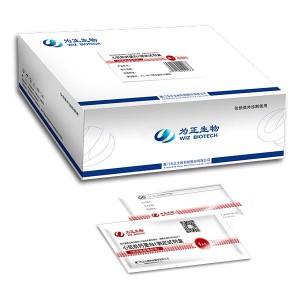Under the "first do no harm principle," it seems reasonable to forgo mass screening as a public health policy at this point.
ABPA is an important complication of chronic asthma resulting from hypersensitivity to the fungus Aspergillus Fumigatus ( AF}. ABPA is characterised by an intense immune response with increased use of oral steroids and potentially progressive lung disease. The aim of this study was to determine if treatment of subjects with ABPA with the antifungal agent Itraconazole (Itz) reduced airway and systemic inflammation. Methods: A randomised double blind placebo controlled trial was performed in stable subjects with ABPA (n=29). Subjects with cystic fibrosis ere excluded. The diagnosis of ABPA was based upon; the presence of asthma, IgE sensitisation to Af. a total serum IgE of lOOOIl’/mL or greater and serum IgG to Af or central bronchiectasis on CT scan. Subjects received Itz 400mg per day (n=15) or placebo (n=14) for 16 weeks. All subjects were reviewed monthly with history, spirometry. sputum induction to measure airway inflammation, serum total IgE and IgG to Af and blood eosinophils. Results: Subjects receiving Itz had a greater reduction in sputum eosinophils from baseline (median fall of 94.5%) compared to placebo (45.4%. p<0.01 ). Those on Itz had a fall in sputum total cell count from baseline (43.9%) compared to a rise in those on placebo (rise 10%. p=0.049). Subjects that received Itz also had a reduction in systemic immune activation; there was a fall in serum IgE (3IOIU/mL) compared to placebo (rise ISIU-’mL, p<0.01) and a fall in IgG to Af(15.4IU/mL) compared to placebo (rise 3.7IU-mL, p=0.03). Conclusion: Treatment of subjects with stable ABPA with Itz 400mg daily reduces eosinophilic airway inflammation along with measures of systemic immune activation. These results imply that Itz is a potential adjunctive treatment for ABPA and this should be further investigated with larger studies of lone term clinical efficacv.
Heart rate of rats treated with Kadukmy™. Data are denoted as mean ± S.E.M of n = 8 for treatment groups and n = 6 in the control groups.
Subscribe to INQUIRER PLUS to get access to The Philippine Daily Inquirer & other 70+ titles, share up to 5 gadgets, listen to the news, download as early as 4am & share articles on social media. Call 896 6000.

BACKGROUND: COPD is a common condition, mainly related to smoking. The burden of the disease is increasing and it is projected to rank fifth in 2020 for the world-wide burden of disease. Acute exacerbations of COPD, usually related to superimposed infection occur commonly and systemic corticosteroids are widely used in their management in combination with other treatments including antibiotics, oxygen supplementation and bronchodilators. OBJECTIVES: To determine the efficacy of corticosteroids, administered either parenterally or orally, on the outcome in patients with acute exacerbations of COPD. SEARCH STRATEGY: Searches were carried out using the Cochrane Airways Group COPD RCT register with additional studies sought in the bibliographies of randomised controlled trials and review articles. Authors of identified randomised controlled trials were contacted for other published and unpublished studies. The last search was carried out in August 2004. SELECTION CRITERIA: Randomised controlled trials comparing corticosteroids, administered either parenterally or orally, with appropriate placebo. Other interventions e.g. bronchodilators and antibiotics were standardised. Clinical studies of acute asthma were excluded. DATA COLLECTION AND ANALYSIS: Data was extracted independently by two reviewers. Outcome data was sent to authors for verification. All trials were combined using Review Manager (version 4.2.4) for analyses. MAIN RESULTS: Ten studies were identified that fulfilled the inclusion criteria. There were significantly fewer treatment failures within thirty days in patients given corticosteroid treatment, odds ratio 0.48; 95% confidence interval 0.34 to 0.68 and Hazard Ratio 0.78; 95% confidence interval 0.63 to 0.97. It would have been necessary to treat 9 patients (95%CI 6 to 14) with systemic corticosteroids to avoid one treatment failure in this time period. There was no significant difference in mortality. The early FEV1, up to 72 hours, showed a significant treatment benefit, weighted mean difference 140 mls (95% confidence interval 80-200 mls), although this benefit was not found for later time points. There was a significant improvement in breathlessness and blood gases between 6 – 72 hours after treatment. There was an increased likelihood of an adverse drug reaction with corticosteroid treatment, odds ratio 2.29; 95% confidence interval 1.55 to 3.38. Overall one extra adverse effect occurred for every 6 people treated (95% CI 4 to 10). The risk of hyperglycaemia was significantly increased, odds ratio 5.48; 95% confidence interval 1.58 to 18.96. AUTHORS’ CONCLUSIONS: Treatment of an exacerbation of COPD with oral or parenteral corticosteroids significantly reduces treatment failure and the need for additional medical treatment . It increases the rate of improvement in lung function and dyspnoea over the first 72 hours, but at a significantly increased risk of an adverse drug reaction.
While the two arms of research within the centre are undertaken by different teams, Foster says it is the critical mass that contributes to its overall success.
Thank you for visiting nature.com. You are using a browser version with limited support for CSS. To obtain the best experience, we recommend you use a more up to date browser (or turn off compatibility mode in Internet Explorer). In the meantime, to ensure continued support, we are displaying the site without styles and JavaScript.
Rangachari, M. et al. T-bet negatively regulates autoimmune myocarditis by suppressing local production of interleukin17. J Exp Med. 203, 2009–2019 (2006).

As shown in Fig. 4, rats treated with VB demonstrated an obvious inhibition of SOD, CAT, GSH, and GPx activity, which indicated the disturbed balance of oxidative stress. In addition, the continuing elevation of MDA, an end product of lipid peroxidation, indicated the involvement of free-radical-induced oxidative injury caused by VB administration.
Yuan, J. et al. Phosphorothioate antisense oligodeoxynucleotide specifically inhibits coxsackievirus B3 replication in cardiomyocytes and mouse hearts. Lab Investig. 84, 703–714 (2004).
Sohnle, P. G., Collins-Lech, C. & Wiessner, J. H. Antimicrobial activity of an abundant calcium-binding protein in the cytoplasm of human neutrophils. J. Infect. Dis. 163, 187–192 (1991).
We don”t have sufficient staffing to contact each commenter who left such a message. If you have a question about why your comment was edited or removed, you can email us at feedback@healthnewsreview.org.
MRI scans are sparing men painful prostate cancer investigations | Diagnostic Kit For Isoenzyme Mb Of C Reatine Kinase Related Video:
The customer satisfaction is our primary goal. We uphold a consistent level of professionalism, quality, credibility and service for Infectious Disease Test Kit , D-Dimer Test Kit , Fsh Test Strip , Our company abides by the management idea of "keep innovation, pursue excellence". On the basis of assuring the advantages of existing merchandise, we continuously strengthen and extend product development. Our company insists on innovation to promote the sustainable development of enterprise, and make us become the domestic high-quality suppliers.






